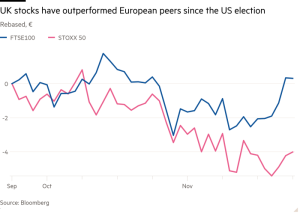Is it stylish to be fit?

Stay informed with free updates
Simply sign up to the Style myFT Digest — delivered directly to your inbox.
A week or so ago I became a cliché. A family man, deep into middle age, locked into life behind a desk, I competed in my first triathlon. It was one of those wild spasms of vigorous activity which — as any doctor will tell you — generally presages the onset of complete physical decrepitude.
Becoming a middle-aged man in Lycra was meant to be a crucible of self knowledge and test of the will. No luck. Mostly it turned out to be an unwelcome reminder that there are some really, really fit people out there. Do the washboard abs of the young make you jealous? Well, when you see a set on a 47-year-old, the humiliation is infinitely sharper. As chiselled thighs blew past me on the biking leg, one after the another, I felt like a lumpy troll cast into a world of elves.


All of this set me to pondering an old question. Is it stylish to be fit? The internet has already forced me to think about this. Write a column or, saints protect you, a tweet about menswear and one of the standard replies is: if you want to look good, you are better off going to the gym than worrying about the cut of your jacket. The point is generally stated less gently than that.
I think this view is wrong, but not in some po-faced, every-body-is-beautiful sort of way. The range of what different people find attractive in the way of bodies is gloriously wide, but acknowledging this, each of us will judge that some people look better in cycling shorts than others. My point is not about being accepting. It’s about the nature of style.
Start with the fact that style and sex appeal are not the same things. Sexual relationships are one kind of relationship. Style — which, for present purposes, we might call the art of self-presentation — pervades all relationships. Our style can bring pleasure to friends, colleagues and family members, who would all fervently hope to be kept well clear of our sexuality. “Attractive” is not short for “sexually attractive.” That style means sex is one of those dumb ideas constantly pushed on us because, for credulous consumers, it works as marketing.
My favourite examples of men of style come from the middle of the century — what I think of as the Miles-Davis/Steve-McQueen era. Davis was rail thin, if not fit, and McQueen a keen sportsman. But the standard bearers of mid-century style also included actor and comedian Jackie Gleason, whose lack of fitness was part of his professional arsenal and who wore trousers beautifully; the enormous and eloquent French restaurateur Fernand Point, whose black suits and dotted bow ties made him resemble a mountain range dressed for a wedding; and the journalist AJ Liebling, who may be a style hero to me alone, and wore his physical dishevelment like a lion’s mane.


I anticipate the following counterargument. If fitness, leanness, muscles and the rest are not the peak and essence of looking good, why is such an enormous fuss made over them? Why can’t the drug companies meet the demand for weight loss drugs? Why the triathlons and other creative forms of self-torture? Would-be west-coat alpha males, touting their longevity regimes, will offer half-witted evolutionary psychology to argue that physical health is proof of fitness for assortative mating. This runs up against the little problem that, in different places and eras, it was physical softness that served as proof of victory in the game of life.
It is Veblen, not Darwin, who best explains our interest in fitness. Fitness marks one as having time to spend at leisure and money to buy elaborate, unnecessary equipment; shows that one is not exhausted by a menial service job; proves that one is self-disciplined, rather than being disciplined by a boss or other superior; and demonstrates alertness to esoteric “wellness” trends. Style is marked deeply by class, too. But style is a richer and more interesting playground, and is much less in denial about itself.
Sign up for Fashion Matters, your weekly newsletter with the latest stories in style. Follow @financialtimesfashion on Instagram and subscribe to our podcast Life and Art wherever you listen
#stylish #fit





